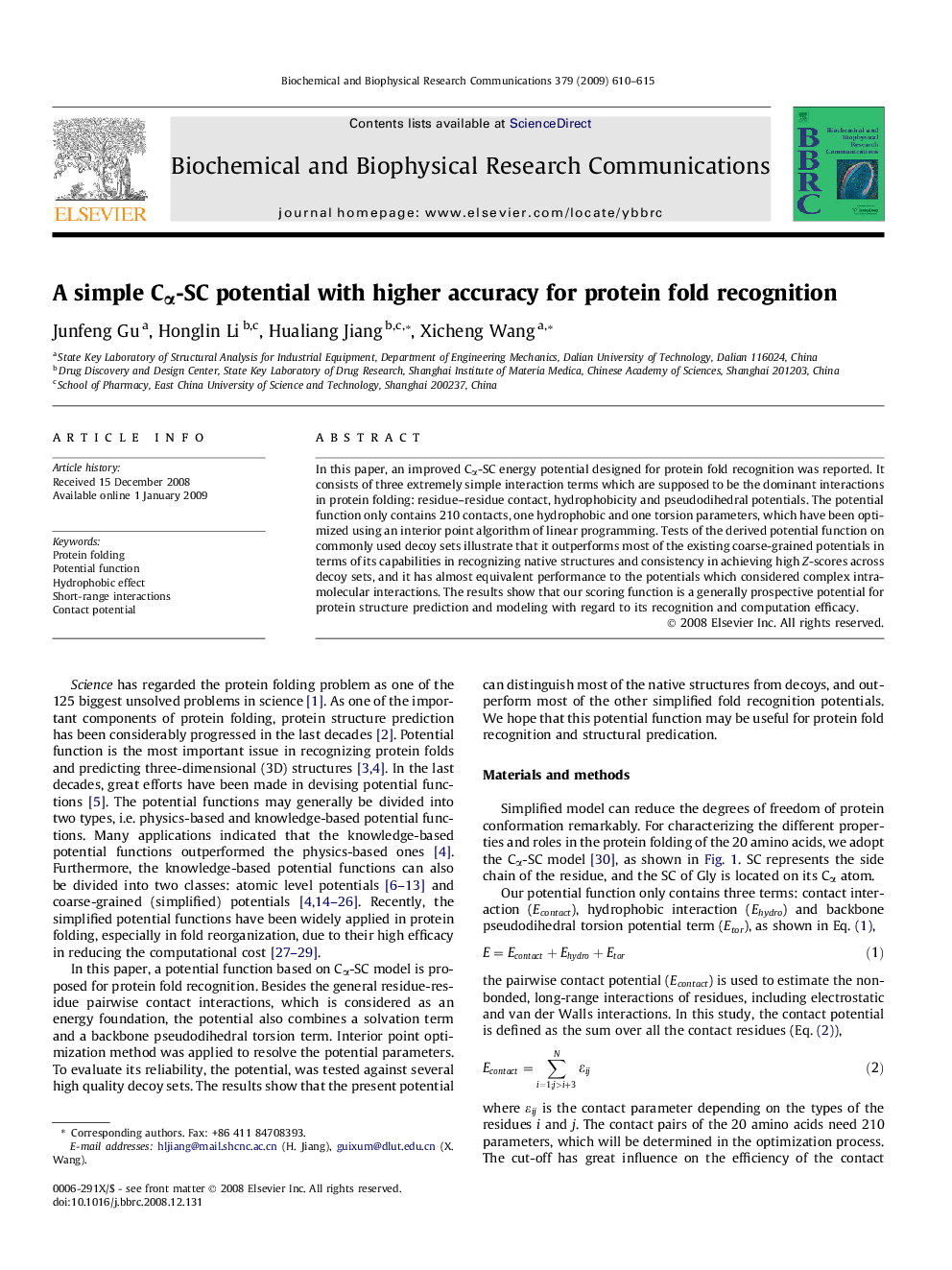| Article ID | Journal | Published Year | Pages | File Type |
|---|---|---|---|---|
| 10766531 | Biochemical and Biophysical Research Communications | 2009 | 6 Pages |
Abstract
In this paper, an improved Cα-SC energy potential designed for protein fold recognition was reported. It consists of three extremely simple interaction terms which are supposed to be the dominant interactions in protein folding: residue-residue contact, hydrophobicity and pseudodihedral potentials. The potential function only contains 210 contacts, one hydrophobic and one torsion parameters, which have been optimized using an interior point algorithm of linear programming. Tests of the derived potential function on commonly used decoy sets illustrate that it outperforms most of the existing coarse-grained potentials in terms of its capabilities in recognizing native structures and consistency in achieving high Z-scores across decoy sets, and it has almost equivalent performance to the potentials which considered complex intra-molecular interactions. The results show that our scoring function is a generally prospective potential for protein structure prediction and modeling with regard to its recognition and computation efficacy.
Keywords
Related Topics
Life Sciences
Biochemistry, Genetics and Molecular Biology
Biochemistry
Authors
Junfeng Gu, Honglin Li, Hualiang Jiang, Xicheng Wang,
